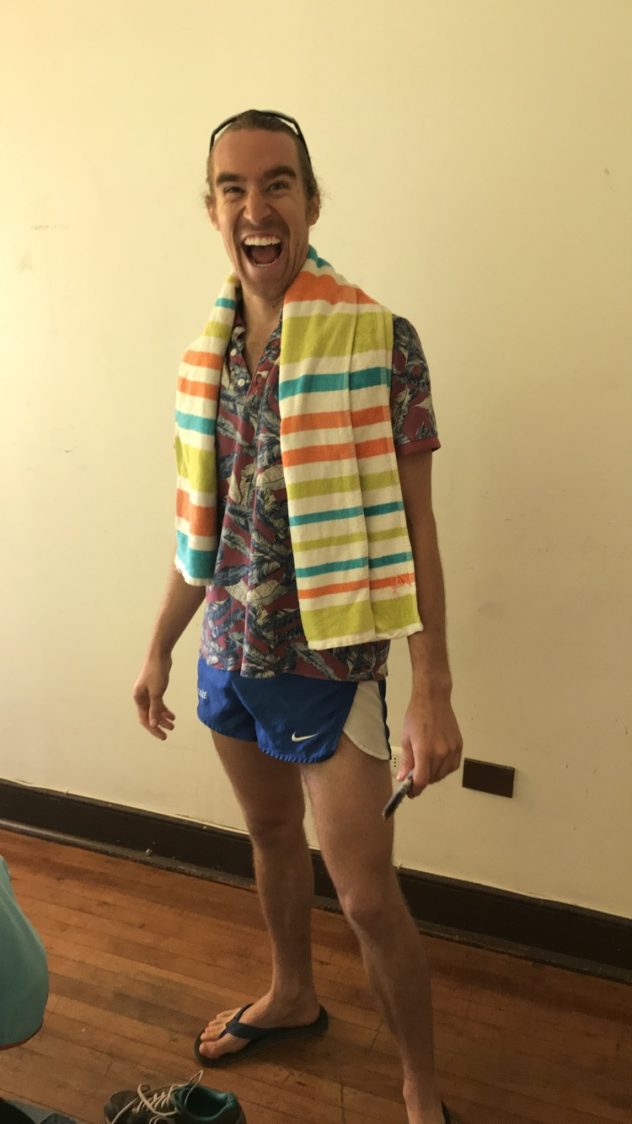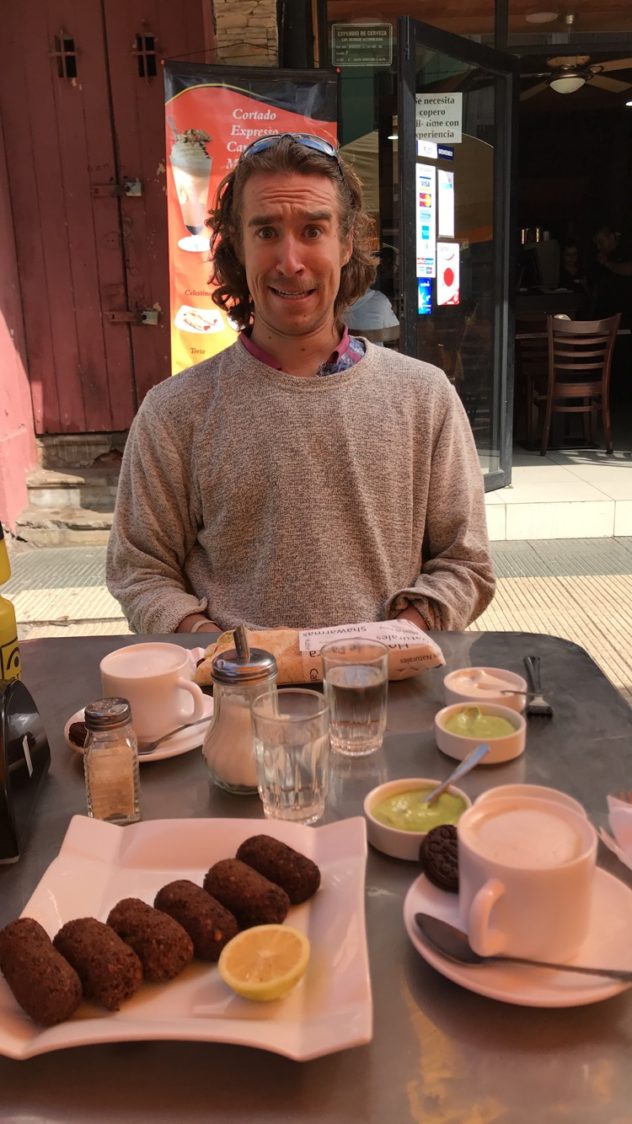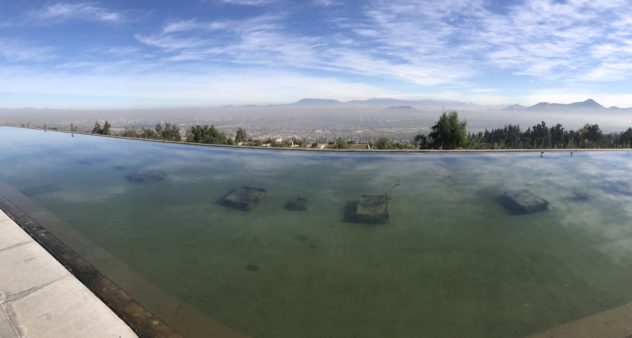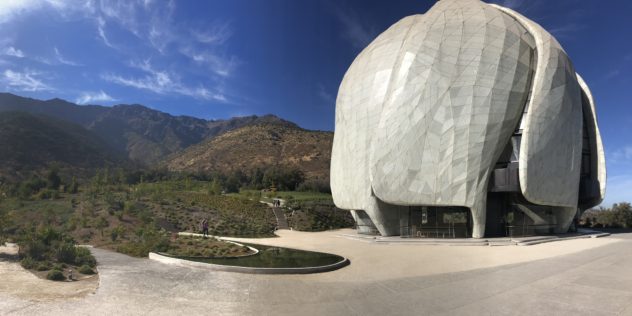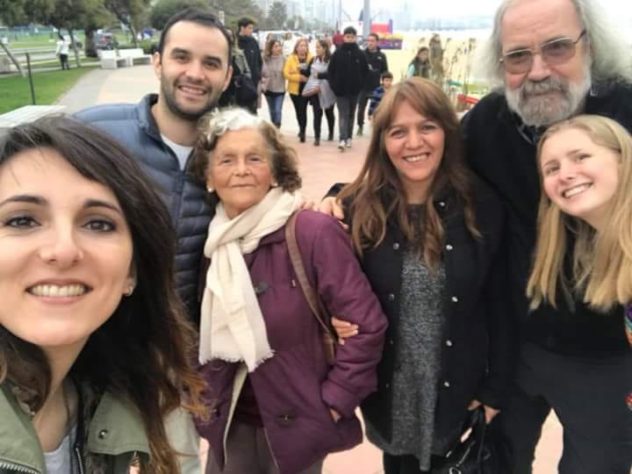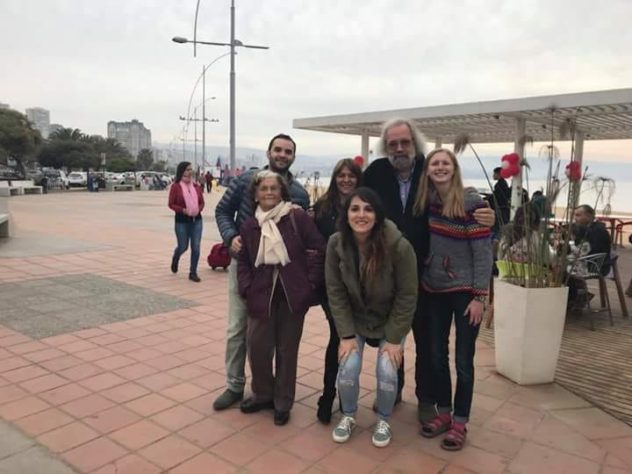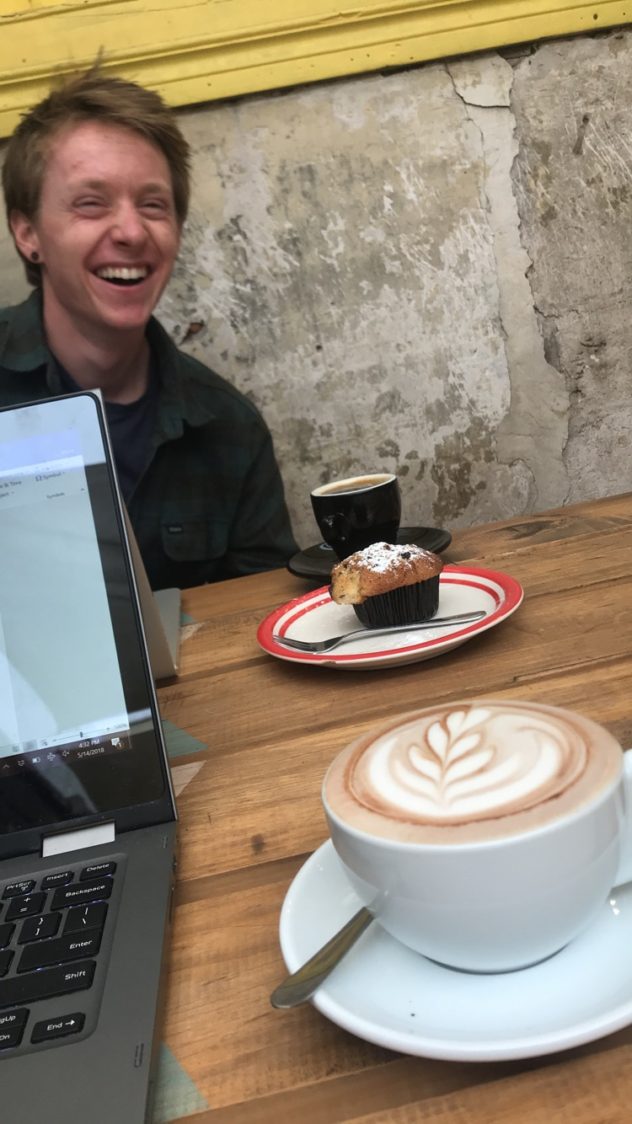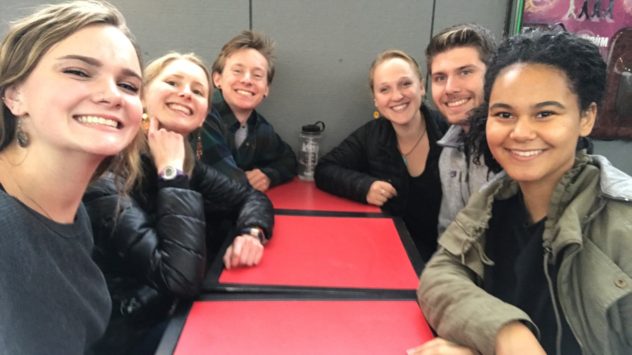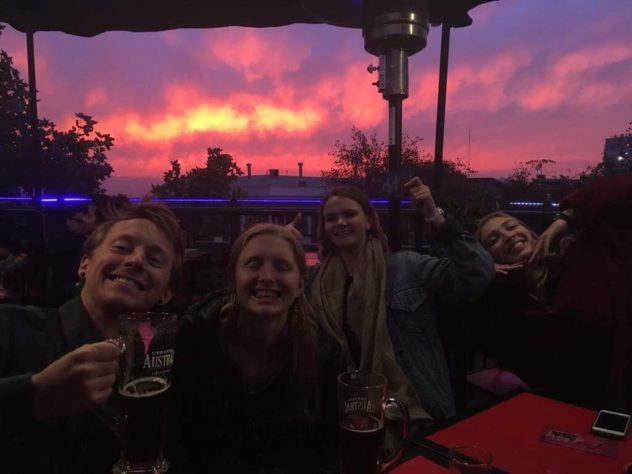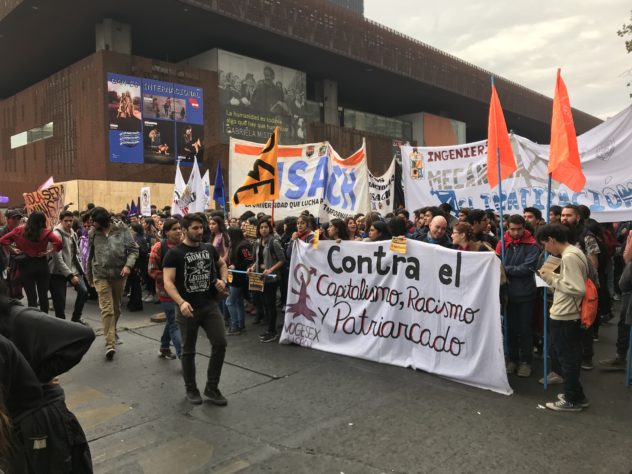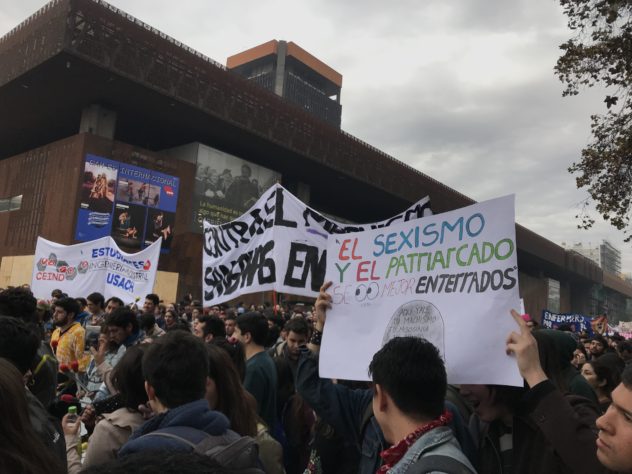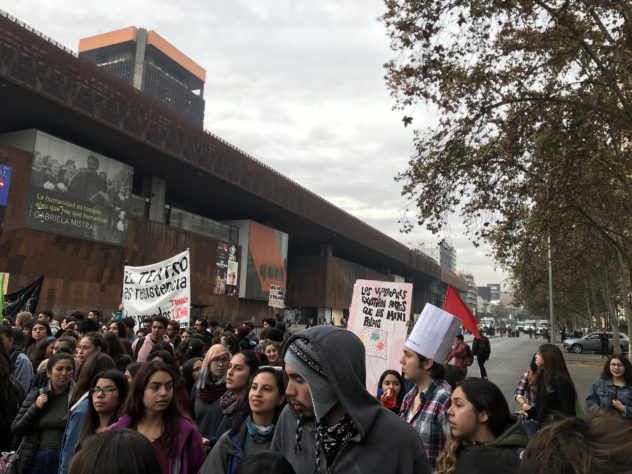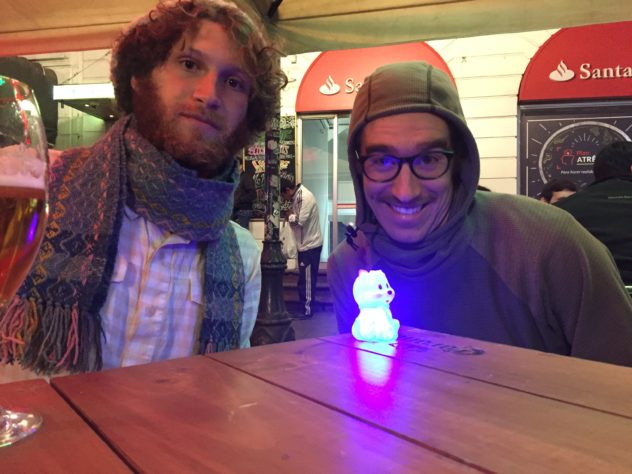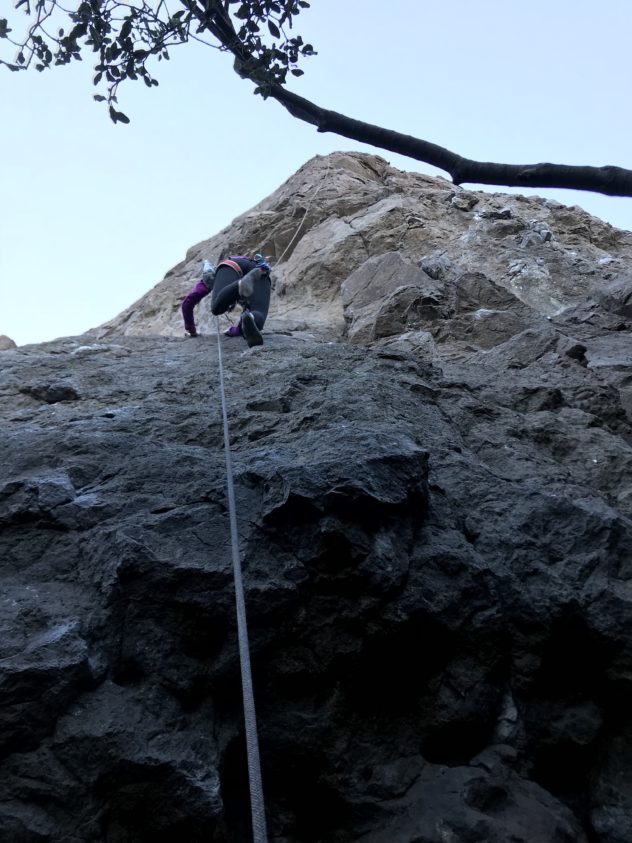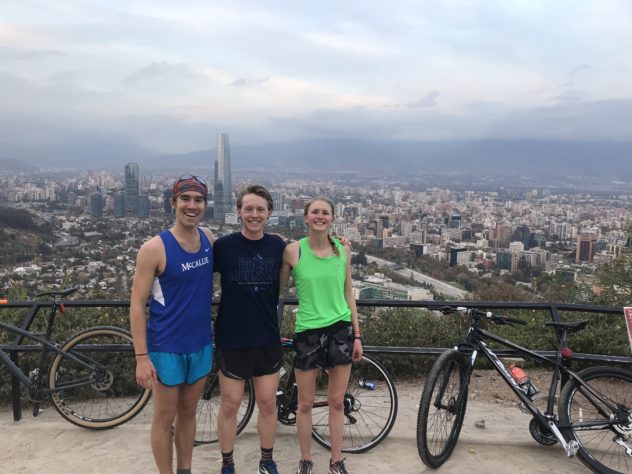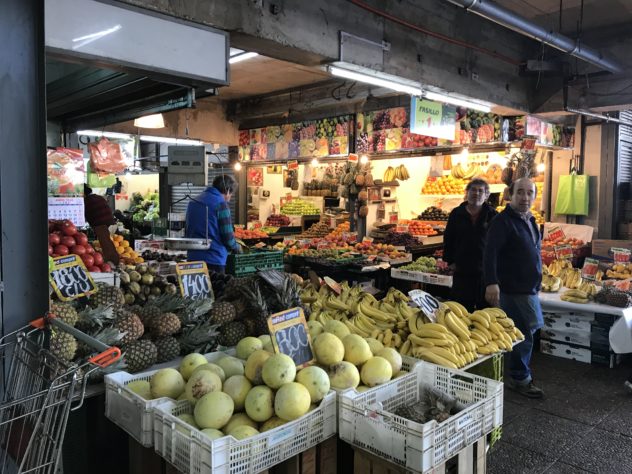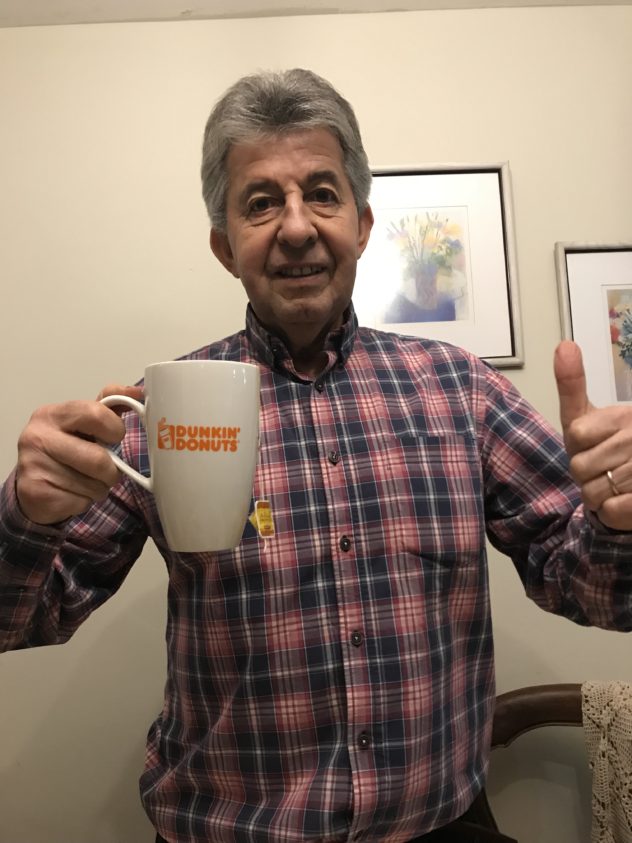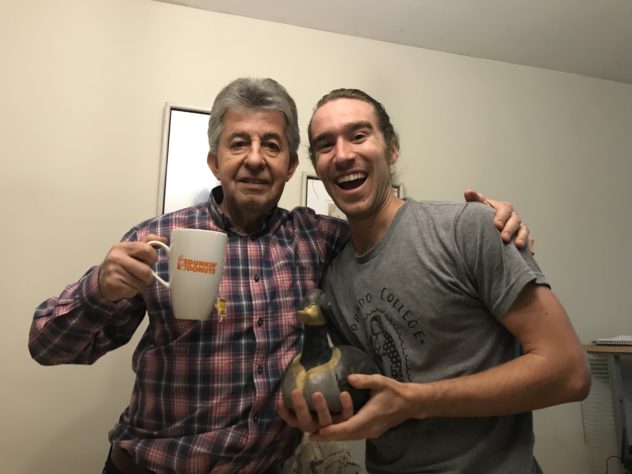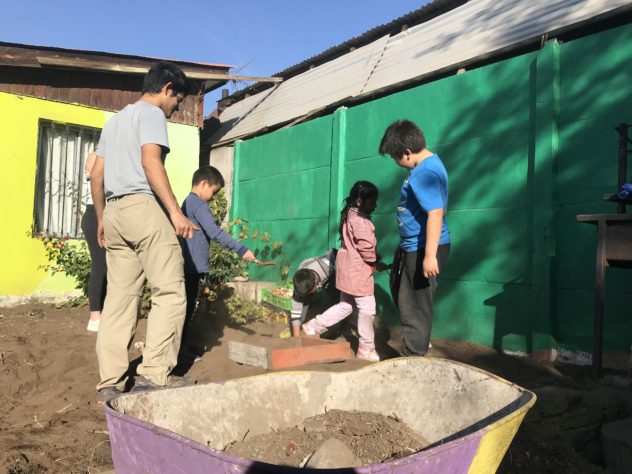Isla Negra, Valparaíso, and Viña del Mar
All is well down here in Santiago! Paula recently bought Roberto and I our next round of ice cream. This time it’s half “chocolate almendrado” (chocolate with nuts), half “frutas del bosque” (fruits of the forest…I asked Paula what that even means and she was just like, “You know…berries.”) Our new family pastime is watching “Caso Cerrado,” a hilarious Latin version of Judge Judy that takes place in Miami, all in Spanish. Paula was dying the other night at two cases in which men came in saying that their wives were physically abusing them (“Mira, él dice que ella le pega!”). We also tonight watched a Latin version of Catfish. Priceless.
We had a glorious weekend of excursions after a long week of class. Bright and early yesterday, we left for Isla Negra, where Pablo Neruda’s second house is located. Isla Negra is characterized as being just a beautiful, rustic, enduring beach; the shore is lined with dark rocks that battle huge waves. Neruda’s house overlooks this idyllic coastline and is quite impressive. I’m not a huge fan, though.
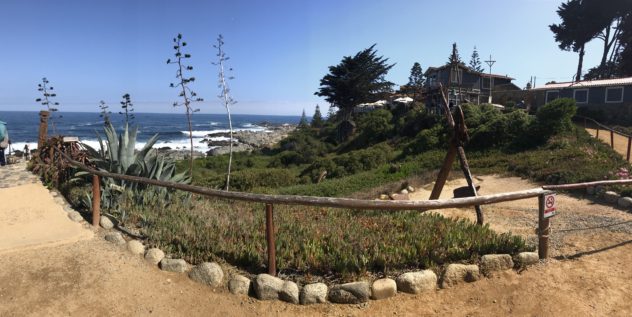
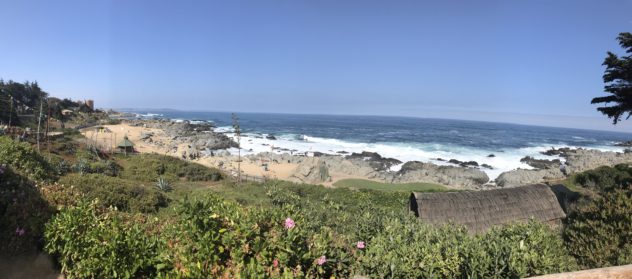
I already had qualms about going to Neruda’s house after visiting Hemingway’s house in Cuba last year. Paula puts it best when she says, “There are simply no Communists who are famous and poor. They let the public (pueblo) stay poor because it’s convenient for them, but they still live in luxury.” (DAMN.) For all his talk of socialism, Hemingway lived in a pristine house in Cuba, with a pool, gardens, a guest house, and tons of American relics – not a speck of Cuban culture and therefore not a speck of respect for Cuban culture, either. He just drank his life away in Havana, encouraging the Revolution but playing no part in it.
Neruda was not as bad as Hemingway was in this regard, but the house is over-the-top. There is a tiny post office outside his house, based off the film and book “La Ardiente Paciencia,” a story of a young postman who delivers Neruda’s mail and asks him to teach him poetry so he can impress a girl for whom he’s fallen head over heels. Neruda teaches him what a metaphor is and endearing things like that. I’ve seen the movie – it’s painfully slow and boring, in my opinion. After passing this little post office box, you enter the main house area and are given an audio tour remote control. This was also a little bit of a bummer since we’ve had two incredibly good tour guides and I was looking forward to another.
The tour starts outside the house, talking about how Neruda was always inspired by his childhood, Neruda saying that a child who doesn’t have the freedom to play doesn’t have a childhood. You then enter the house, passing a quote that states, “I returned from my trips. I went constructing happiness.” Inside the house, photos aren’t allowed, so I can only explain what I saw: lots of stuff. The entryway is very quaint, the floor made of snail shells. You then take a right into a grand room that looks like the inside of a ship. Everything is made of wood, including a large balcony that one could imagine pirates standing on. Not only are there tons of colorful glass vessels, mirrors, and ships-in-bottles, there are also very large figureheads (the female statues you see on the prow of ships). And as was the case in every room, there was an enormous panoramic window viewing the sea.

The dining room had a large table with even more of the same trinkets. Neruda was a huge collector (on the verge of hoarder), gathering objects related to the sea and his memories. Moving into his bedroom, his bed was a small little thing (strange, because as Paula pointed out, “He was fat! And ugly!” The ugly part of course is unrelated). We could see all of his little suits lined up in his closet and he even had a stuffed toy sheep by his bed, to remind him of childhood.
The tour then led us outside again, where Neruda has a huge star-shaped structure with a bell. The bell rang every time Neruda returned from a long trip or whenever visitors arrived. Neruda was known to be a very fun, accommodating host to his fellow literary and politician friends.
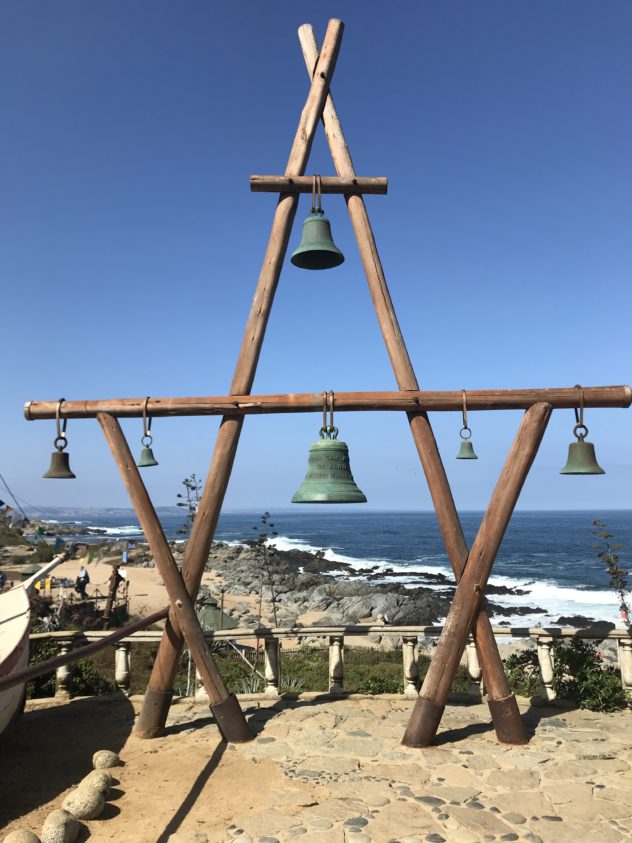
Kind of like Goethe, Neruda had a passion for life and all of its little things. The final third of the tour displayed all of those things – beetles and butterflies, pipes, Japanese masks, statues, and instruments (though he played none of them). Other items of note were a giant globe and telescope, framed photographs of his literary inspirations and friends – Poe, Whitman, Lorca, Mistral – and a huge mural done by his artist friend made from rock, not mosaic. Continuing on, we saw a room dedicated to childhood, containing a large horse statue, colorful woven prints, and toys. The last room was his study, his favorite room to write. He only wrote with green pencils, and washed his hands before and after writing.
I’ll admit, I was very impressed by the final exhibit of the tour: Neruda’s shell collection. A special room is dedicated to all of the unique shells and conches he gathered, of every shape, size, and color imaginable. It was sweet, not gonna lie.
I can appreciate Neruda’s poetry, his eye for interior design, his affinity for beauty; I can’t reconcile the way he lived with what he claimed to represent, however. It’s also said that he had “a house for every wife,” which makes me barf, in light of my current irritation with men in general. Paula really disdains him for gaining all this fame and notoriety by marrying his first wife, an Argentinian woman who had lots of money and influence in the literary and political world. He then dumped her, got a new wife, and made this new house. Isla Negra was beautiful and peaceful and powerful, but made me feel a little ill inside, regardless.
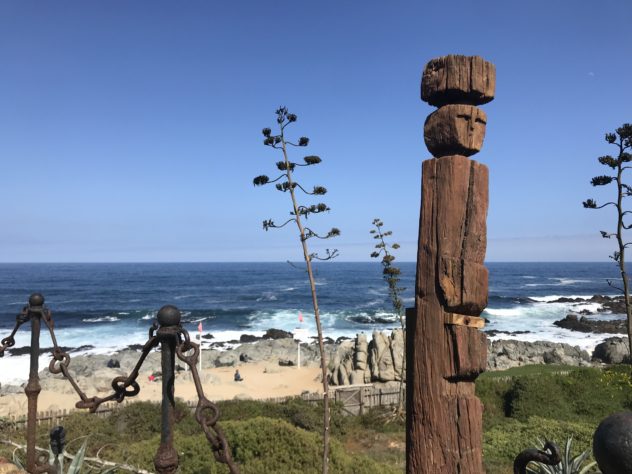
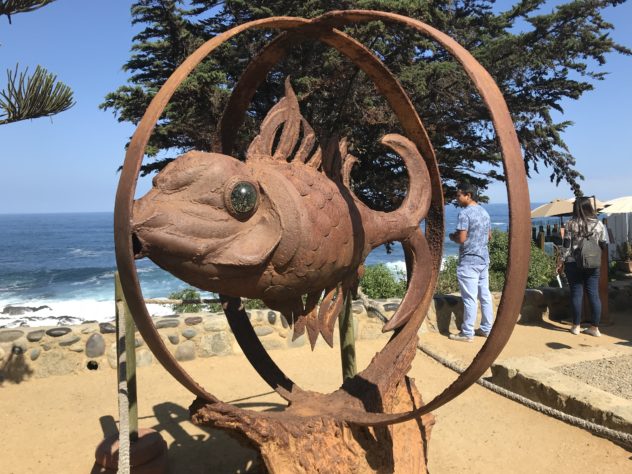
We carried on to Valparaíso. Valparaíso is all the rage when it comes to Chile. Everyone says “You’ve got to go to Valpo!” So I was glad to finally go and stop hearing about it. Winding our way through hills covered in scrubby pine trees and eucalypti, we arrived in the city mid-afternoon. Valpo for a long time was more important than Santiago because it was a very necessary port. Before the opening of the Panama Canal, ships had to navigate all the way around South America, so stopping in Valpo was a must. Once the canal opened, Valpo’s industry suffered, but it’s since recuperated more or less.
Valpo doesn’t have a specific foundation date; it’s just always been. It’s called Valparaíso because it’s a shortened version of saying the words “Va al paraíso,” or, “going to paradise.” Houses have gone up in every square inch of the supposed 400 hills, and it’s impossible not to see the glaring parallel between them and those of San Francisco. The houses are short and colorful, many previously made of wood but since renovated (before, if there was a fire, a whole hill could go up in flames due to the wood construction of all the houses). Because the city is right on the water, the houses need to be painted with a very water-resistant paint. Thus, it became a tradition to paint houses using the same paint used on ships. In fact, ship owners would paint their Valparaíso houses in the same color as their ships, so they could see their houses as they came into port.

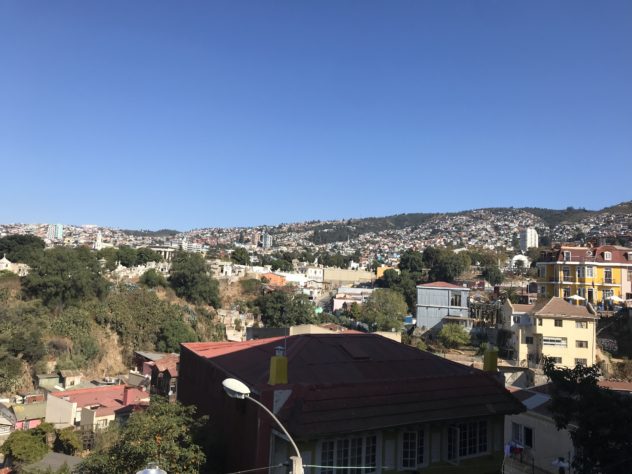
We did a long walking tour of Valparaíso, starting at the top of the city and making our way down. We began at a very wide mural depicting the Mapuche tradition – I won’t go into what all the figures in it mean, but Isa gave a very thorough explanation. This mural is one of thousands. Essentially every corner of Valparaíso has insane graffiti of all styles. You simply cannot fathom the beauty, artistry, and hipster-ness of it all. There are countless coffee shops, design stores, jewelry makers, and painters to pass as you wander around. We ended at the port itself, after a very steep tram ride down, and had a lovely time looking at the boats.

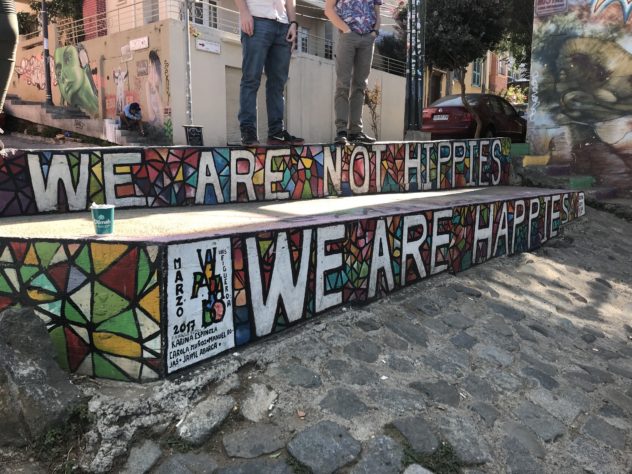
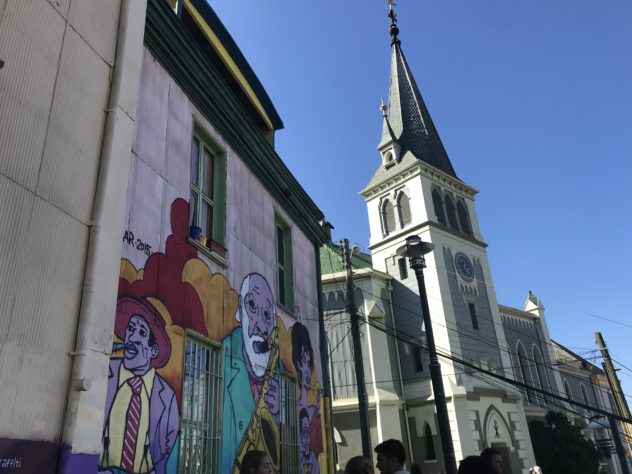

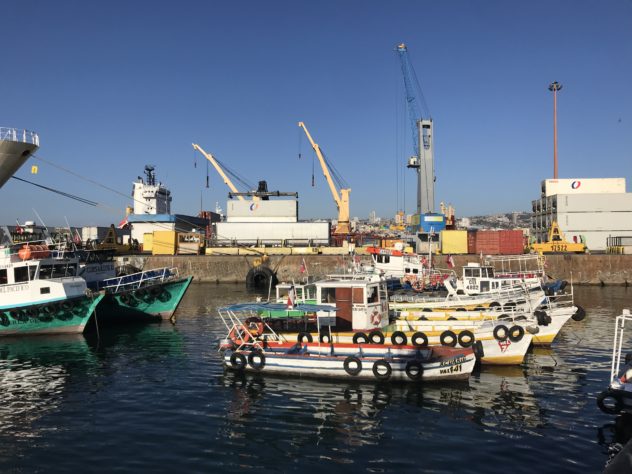

The group had the option of staying in Viña del Mar for the night, and five out of 12 of us did. Viña del Mar is the town just north of Valpo, a literal 5-minute drive. Viña is much more expensive, full of tall apartment buildings, glitzy shops, and simply more industry. But it’s safer, especially at night. Austin and I, relieved to finally have the freedom of exploring on our own, ditched the group as soon as possible. We were dropped off close to our Airbnb and bolted. The Airbnb was five minutes from the beach, belonging to a woman named Tatiana. The house itself was huge, housing her two dogs (one of which played relentless fetch with Austin), her kids (age, probably all under five, number, undetermined because there was just so much noise in general), and her mother. It worked fine for us; bare bones room with twin beds and a bathroom with towels. Fine, done.
The sun had nearly gone down, but we wanted to see the beach before getting dinner. We got sidetracked, however, by a 6-floor lamp store. It was just so shiny that we felt compelled to explore it. So, 10 minutes till close, we ran through every floor of this lamp store and could not have been more stoked. The shopkeepers were baffled.
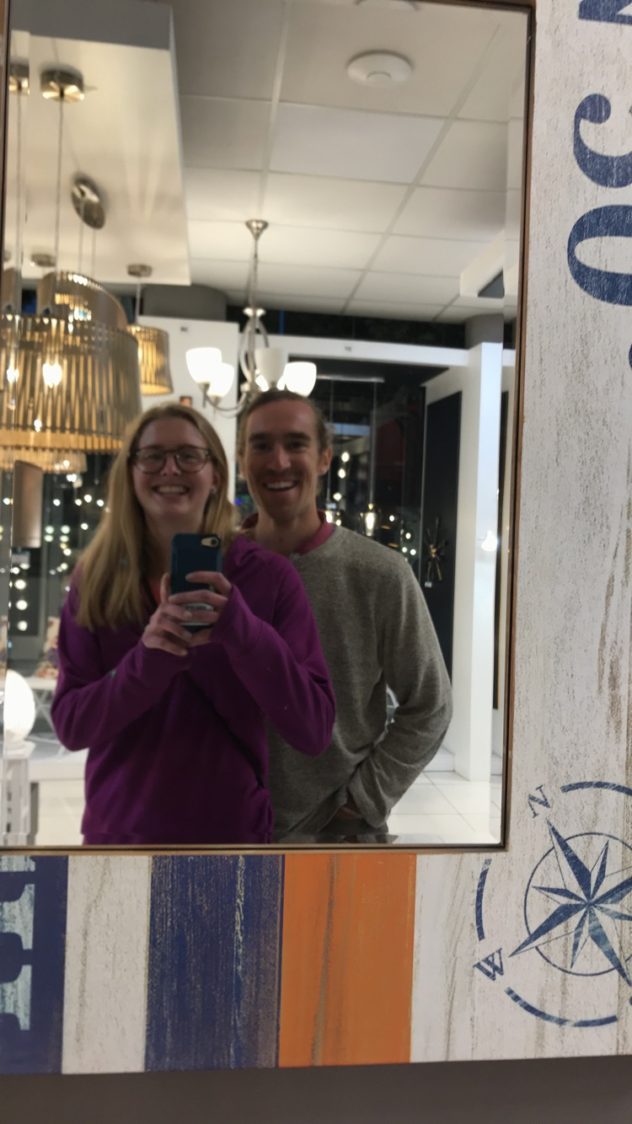
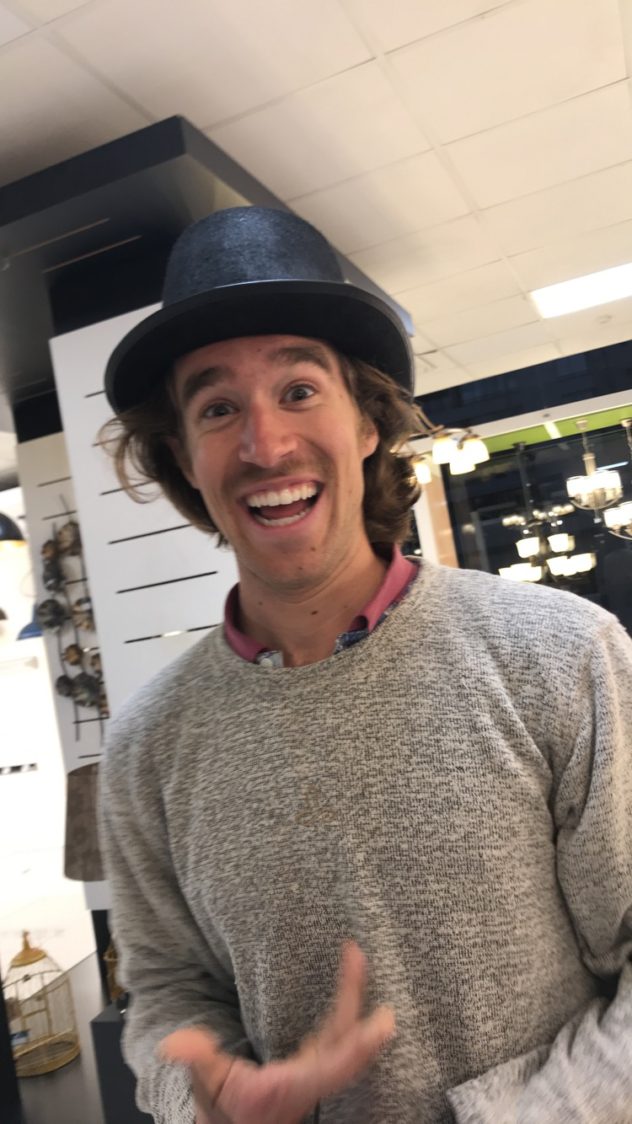
We eventually made it to the beach and could see Valpo at night, a lovely sight. We then headed back into town and grabbed a fantastic dinner of classy empanadas, a huge plate of papas fritas, and pisco sours. After, we absolutely passed out.
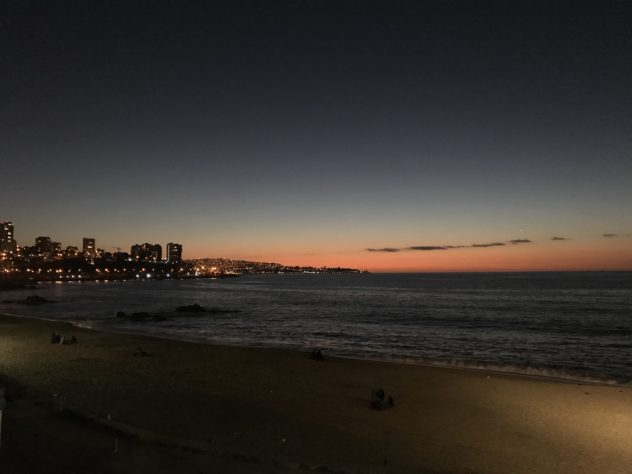

This morning, we went for a run along the coastline, as Paula told me we should do, and worked off the papas fritas. We only had one plan for the day: the beach. We grabbed our stuff, bought some breakfast, and just hung out at the beach for a few hours. The water was frigid, but we made it in once just to say we did. We then headed back, packed up, and said goodbye to Tatiana. Before departing, we filled up on falafel and found our way to the bus station. It was honestly a very simple day, but we really couldn’t have had a better weekend. I have a feeling going back to class tomorrow will be rough, so we’ll just have to look forward to our next adventure: climbing and exploring Cajón de Maipo next weekend!
